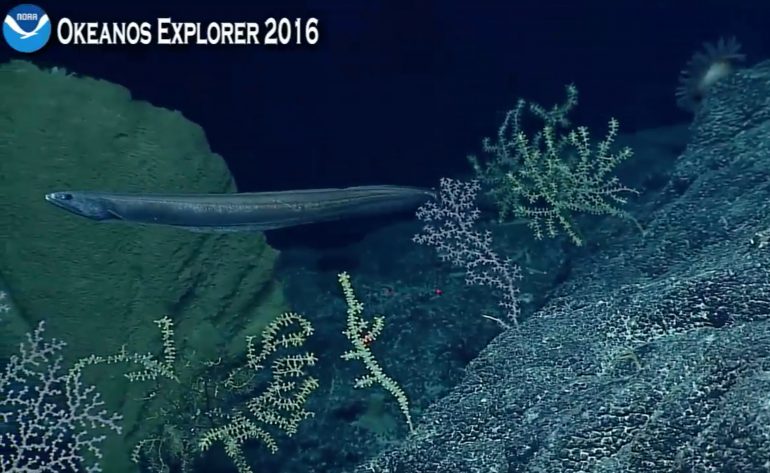NOAA Ship Okeanos Explorer is currently exploring largely uncharted deep-sea ecosystems and seafloor in and around the Wake Atoll Unit of the Pacific Remote Islands Marine National Monument (PRIMNM). You can follow along with the Okeanos Wake Atoll expedition now through August 19 by tuning in LIVE at the Okeanos website.
Last month we wrote about a stunning pink Hemicoallium from the Marinas trench, and each and every time we turn on the ships live feed we are captivated by nature’s hidden beauty. What an incredible time we are living in where robots can send selfies from Mars and with the click of a button we are effortlessly transported to the deep sea.

Okeanos is equipped with a deep diving remote operated vehicle (ROV) named Deep Discoverer, also known simply as “D2”. D2 weighs in at nine thousand pounds, has over 3,000 feet of electrical wiring, has twenty LED lights, and nine video cameras.
We highly recommend you watch an Okeanos dive from start to finish. Dives last a few hours depending on that day’s mission, and if you open Camera 3 before D2 reaches the bottom, the daily dive briefing appears with a digital map of the dive site.

Not all Okeanos dives are created equal which adds to the excitement of unchartered exploration. Some dives focus on biology, corals, sponges, sea cucumbers and fish, while other dives focus on the seafloor geology, or exploring deep-sea shipwrecks.
NOAA Ship Okeanos Explorer uses telepresence technology to transmit data in real-time to a shore-based team of scientists who actively participating in the expedition. You can’t help but come out feeling smarter after every dive as the team of skilled ROV pilots and expert scientists zoom into strange looking polyps overtaking a coral and promptly describe the details of each species.

Below we’ve put together this collection of images from Wake Atoll and hope everyone is inspired to dive into the unknown with the Okeanos Explorer.



